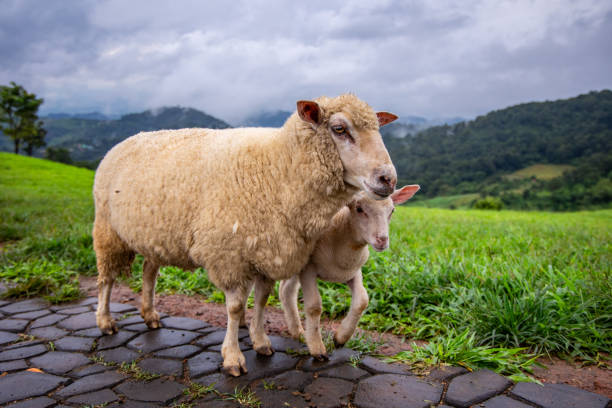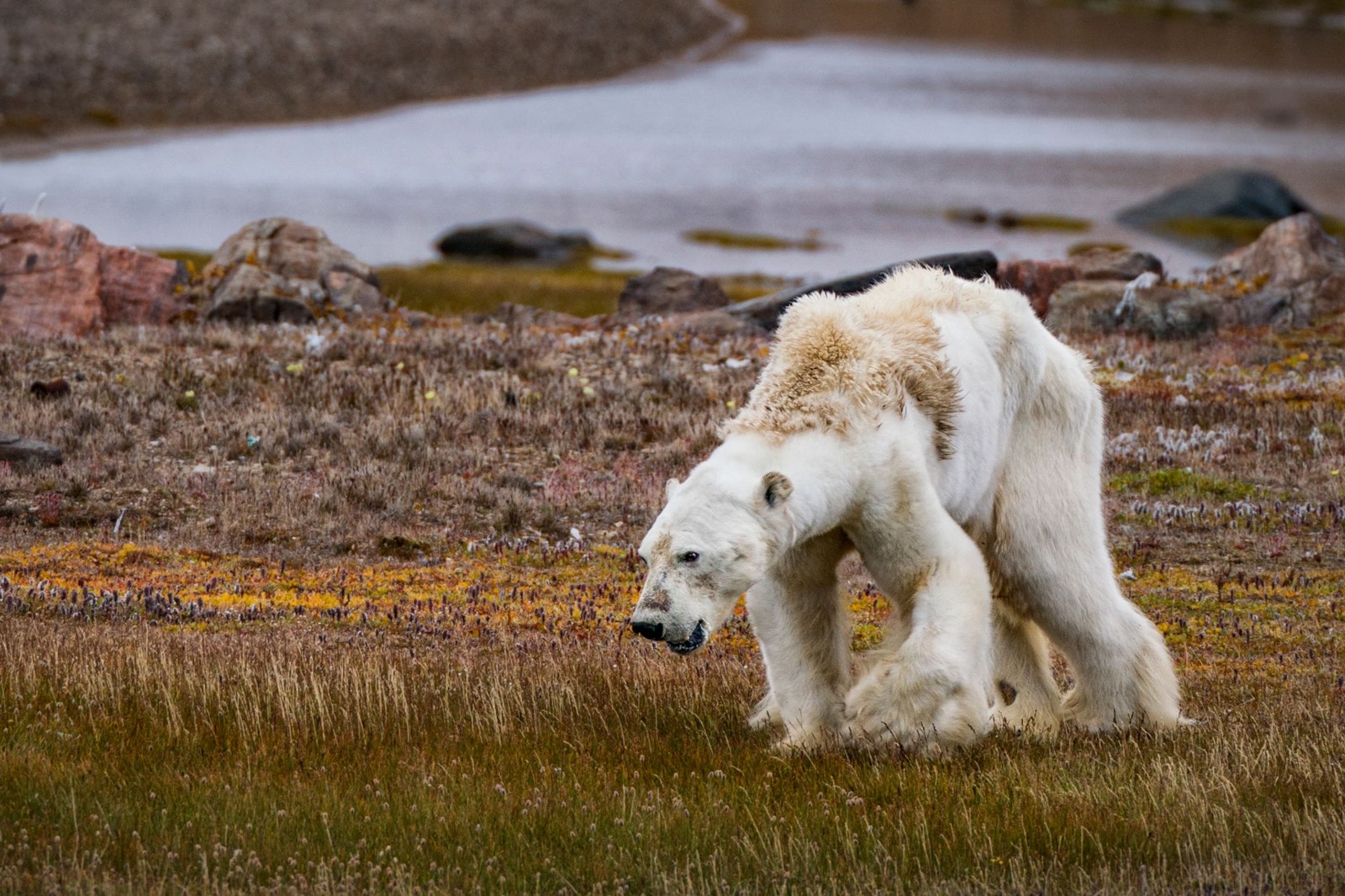
How to Prepare Your Cattle for the Rainy Season: A Guide for Farmers
Preparing for the rainy season requires proper care, shelter, and management practices to ensure the health and productivity of your cattle. Here’s how to safeguard your herd from the challenges of wet weather.
🐶 Pet Star
47 min read · 14, May 2025

Understanding the Impact of the Rainy Season on Cattle
The rainy season can bring a host of challenges for cattle farmers, but with the right preparation, the negative impacts can be minimized. For cattle, the rainy season is not just about wet weather; it involves potential flooding, mud, colder temperatures, and increased humidity, all of which can lead to various health risks if not properly managed.
Health Implications for Cattle During the Rainy Season
During the rainy season, cattle face several health issues that need to be proactively addressed. These include respiratory infections, foot rot, mastitis, and even heat stress during unseasonal temperature spikes. Cattle may also be more susceptible to diseases carried by insects that breed in stagnant water, like ticks and flies, which can cause irritation and infection.
- Respiratory Infections: Damp environments can make cattle more vulnerable to respiratory illnesses. The high humidity and sudden temperature changes can lead to pneumonia or other lung infections.
- Foot Rot: Cattle are particularly vulnerable to foot rot when they spend extended periods in wet and muddy conditions. The constant exposure to moisture softens hooves and creates an environment conducive to bacterial growth, leading to painful infections.
- Mastitis: With the increase in moisture, cattle are at a higher risk of developing mastitis, particularly if their udders are exposed to wet conditions for extended periods. This infection can drastically reduce milk production and cause severe health issues for the animal.
Nutritional Challenges for Cattle in Wet Conditions
The availability and quality of pasture can change drastically with the rainy season. While the rain can benefit pastures by promoting growth, too much water can cause waterlogging and reduce grass quality. Overgrazing and lack of access to dry, nutritious feed can also exacerbate cattle health issues.
Key Steps to Prepare Cattle for the Rainy Season
The rainy season may seem challenging for cattle farmers, but there are several important steps you can take to prepare your herd effectively. These measures are essential for maintaining the health and productivity of your cattle throughout the wet months.
1. Building and Maintaining Proper Shelter for Your Cattle
The first step in preparing your cattle for the rainy season is ensuring they have access to adequate shelter. Cattle need a dry place to retreat from the rain, particularly when there are extended periods of wet weather.
- Building Covered Shelters: Cattle shelters should be designed to protect them from heavy rainfall and wind. Barns or roofed enclosures with adequate ventilation can help minimize the risk of respiratory diseases. It’s essential that the shelter is large enough to accommodate the entire herd comfortably.
- Ground Drainage: Shelters should be located on well-drained ground to prevent water from collecting and creating muddy conditions inside the barn. Installing drainage systems around the shelter can prevent water from accumulating, helping to maintain dry bedding and a clean environment.
- Bedding: Proper bedding, such as straw or sawdust, should be used to keep the area dry. Wet bedding can lead to the growth of bacteria and contribute to foot rot and mastitis. Regularly replacing bedding during the rainy season ensures that cattle stay comfortable and clean.
2. Managing Pasture and Grazing During the Rainy Season
Pastures can be significantly affected by the rains, and it's crucial to manage grazing carefully to ensure cattle get the nutrition they need without damaging the land. Overgrazing or allowing cattle to walk through waterlogged pastures can cause long-term damage to soil quality and lead to poor grazing conditions.
- Monitor Grazing Areas: As the rain continues, pasture management becomes increasingly important. If the pastures become waterlogged, it's best to rotate the cattle and move them to drier sections of the land. This allows the soil to recover and prevents overgrazing in one area.
- Supplemental Feeding: When the quality of pasture decreases due to excess rain or waterlogging, supplementary feeding becomes essential. Providing high-quality forage, silage, or hay ensures that your cattle are receiving the necessary nutrients despite reduced grazing opportunities.
- Soil Health: Maintaining healthy soil is critical for the long-term productivity of your farm. If possible, soil aeration and proper drainage should be implemented to avoid waterlogging that could damage pasturelands. Avoid grazing cattle on land that is prone to flooding or excessive wetness.
3. Ensuring Proper Hydration and Water Management
While rainfall provides a natural water source for cattle, the rainy season can also cause issues with water quality. Standing water from rain or flooding can become contaminated with bacteria, algae, or other harmful substances, which could cause waterborne diseases in your cattle.
- Clean Water Supply: Ensure that cattle have access to clean, fresh drinking water throughout the rainy season. Regularly clean water troughs and storage tanks to prevent contamination. Ensure that water sources are not directly exposed to flooding, which can introduce contaminants.
- Flood Control: In flood-prone areas, cattle may be at risk of drinking water that has been contaminated by runoff from fields or nearby areas. Setting up elevated troughs or creating a clean, consistent water supply can mitigate this risk.
4. Monitoring and Preventing Foot Rot
Foot rot is a common issue during the rainy season, as cattle spend more time in wet, muddy conditions. If left untreated, foot rot can lead to lameness, infections, and even decreased milk production. To prevent foot rot, farmers need to implement proper management practices, including regular hoof care.
- Hoof Care: Routine hoof trimming and inspection are critical for preventing foot rot. Cattle’s hooves should be checked regularly for any signs of infection or injury, and any affected animals should be treated immediately.
- Dry and Clean Bedding: Ensure that cattle have access to clean, dry bedding, and minimize their exposure to wet, muddy environments. Muddy conditions can cause hooves to soften, which makes them more susceptible to infection.
5. Improving Cattle Nutrition During the Wet Season
During the rainy season, the nutritional content of pasture can vary, and supplemental feeding may be necessary to maintain optimal health. Ensuring that your cattle get the right balance of nutrients is key to preventing weight loss, poor milk production, or other health issues.
- Balanced Diet: A balanced diet is essential for cattle to maintain good health. In addition to pasture, consider providing your cattle with a mix of high-quality hay, silage, and grain to supplement their diet. This ensures they are getting the necessary vitamins and minerals during the rainy season.
- Vitamins and Minerals: Wet conditions can cause certain nutrients to leach out of the soil, leading to deficiencies in pastures. Supplementing with vitamin and mineral mixes can help ensure cattle maintain optimal health and productivity.
6. Protecting Cattle from Insect-borne Diseases
Rain and high humidity provide a perfect breeding ground for insects such as flies, ticks, and mosquitoes, which can spread diseases like tick-borne fever, bluetongue, and other viral infections. To protect cattle, it’s important to control insect populations and minimize exposure.
- Insect Control: Use fly repellents, insecticides, or natural remedies like garlic to keep insects away from your cattle. Additionally, ensure that your cattle have access to shelter, especially during the peak mosquito and fly activity periods.
- Vaccination: In regions where insect-borne diseases are a concern, vaccinations can be an effective preventive measure. Consult with your veterinarian to determine the best vaccination schedule for your herd.
7. Regular Health Checks and Veterinary Support
The rainy season can exacerbate health problems for cattle, especially those related to wet conditions and changes in temperature. Keeping track of the overall health of your herd is essential to catching and treating any issues early.
- Routine Health Checks: Regularly monitor the health of your cattle for signs of illness, such as coughing, limping, or changes in appetite. Early detection of problems allows for faster treatment, minimizing the potential for severe issues.
- Veterinary Care: Ensure that you have access to a good veterinary service, particularly if you live in an area prone to diseases that are common during the rainy season. Work with your vet to establish a health management plan for your herd.
8. Preparing for Potential Flooding
Flooding is one of the more severe consequences of the rainy season. Excessive rainfall can result in flooded fields, disrupted grazing areas, and the potential for injury or even death if cattle are caught in rising water. Preparing for and managing the risks of flooding is crucial to protecting your livestock.
- Flood-Proofing Your Farm: If your farm is located in a flood-prone area, it's essential to evaluate the topography and make any necessary adjustments. This could include creating higher ground areas or building elevated enclosures where cattle can safely retreat in the event of flooding. You might also want to consider creating barriers or water channels to divert floodwaters away from important areas like feeding stations and shelters.
- Evacuation Plans: In extreme cases where flooding cannot be avoided, having an evacuation plan in place for your cattle is vital. Identify higher ground or safe zones where cattle can be moved in advance of a flood. Make sure to have adequate staff, equipment, and vehicles ready to assist with moving the herd swiftly and safely.
- Flood-Resistant Fencing: Standard fences may not hold up well during flooding, especially if the water carries debris that can damage them. Consider installing flood-resistant fencing or reinforcing existing structures to prevent cattle from wandering into dangerous floodwaters.
9. Ensuring Good Livestock Handling Practices During the Rainy Season
The rainy season can bring mud, slick surfaces, and wet conditions that make handling cattle more challenging. To ensure the safety of both the cattle and the handler, it’s essential to adapt livestock handling practices to the season's unique conditions.
- Safety First: When working in wet conditions, always prioritize safety. Wearing non-slip footwear and waterproof gear can help prevent accidents. For the cattle, avoid overexerting them, as wet conditions can stress animals. Ensure there is no risk of injury from slippery surfaces or objects that may be obscured by mud or water.
- Handling with Care: Wet conditions can lead to cattle being more skittish or agitated. Approach them with care, using calm and steady movements. Cattle are more likely to become stressed or injured when handled roughly or when they are startled by sudden movements.
- Managing Cattle Movement: In heavy rain, cattle are more likely to become disoriented or resistant to moving. Make sure they have clear paths to follow to and from shelter, grazing areas, and feeding stations. Ensuring that paths are free of hazards and easily traversed will help reduce stress and make it easier to manage their movement during the rainy season.
10. The Role of Technology in Cattle Management During the Rainy Season
In the modern age, technology can significantly improve the way farmers manage their cattle, especially during the unpredictable rainy season. There are various tools available that help monitor cattle health, pasture conditions, and the weather, which can be particularly useful in preparing for and responding to the challenges posed by the rainy season.
- Weather Monitoring Tools: Understanding weather patterns can help farmers prepare for heavy rainfall and potential flooding. Using weather forecasting apps, climate monitoring tools, and other technology can allow farmers to plan ahead for adverse weather conditions and adjust management practices accordingly.
- Cattle Health Monitoring Systems: Wearable tech for cattle, such as health trackers, can provide real-time data on the animal’s health. These devices can monitor vital signs, detect early symptoms of illness, and track the cattle’s movement, all of which can alert farmers to potential problems that could be exacerbated by wet conditions.
- Automated Feeding Systems: During the rainy season, it can be difficult to maintain consistent feeding schedules, especially when pastures are waterlogged. Automated feeding systems can help ensure cattle receive the proper nutrition regardless of weather conditions. These systems can provide precise amounts of feed at scheduled times, reducing the need for human intervention and ensuring that nutrition is consistent.
- Drones and GPS Technology: Drones can be used to monitor pastures and cattle remotely, especially when land is difficult to access due to flooding or muddy conditions. They can be used to check for grazing patterns, track cattle movement, and ensure the cattle are spread out across the farm efficiently.
11. Preparing for Milking Challenges During the Rainy Season
For dairy farmers, the rainy season can pose particular challenges when it comes to milking. Wet and muddy conditions can affect milk quality, udder health, and milking efficiency. Proper planning and adjustments to milking practices can help mitigate these risks.
- Keeping Udder Clean: Wet conditions can make it more difficult to maintain clean udders. Wet straw, mud, and moisture from the rain can lead to a higher risk of infections like mastitis. Before milking, clean the udders thoroughly to avoid contamination. Make sure cows have access to dry bedding before milking to minimize exposure to moisture.
- Maintaining Milking Equipment: Milking machines and other equipment should be regularly inspected and maintained to ensure they are functioning properly during the rainy season. Wet conditions can increase wear and tear on machines, so it's important to clean them frequently and keep them dry to prevent malfunctions.
- Managing Milk Storage: After milking, ensure that the milk is stored properly to avoid contamination from bacteria or other environmental factors. The rainy season may increase the risk of bacterial growth, so proper cooling and storage conditions are vital.
Conclusion:
The rainy season presents both challenges and opportunities for cattle farmers. While wet weather can create risks such as flooding, foot rot, respiratory diseases, and poor pasture conditions, proper preparation can significantly mitigate these impacts. By ensuring cattle have access to dry shelter, maintaining healthy pastures, managing water quality, and prioritizing nutrition, farmers can ensure their cattle remain healthy and productive through the rainy season.
Additionally, investing in proper infrastructure such as drainage systems, flood-proof fences, and well-maintained equipment is crucial for long-term sustainability. Technologies like weather monitoring tools, health tracking systems, and automated feeding systems can also provide valuable assistance, enabling farmers to manage their herds more efficiently despite the challenges.
Moreover, addressing issues related to milk production, insect control, and regular veterinary care will help maintain optimal health and productivity throughout the rainy months. With these proactive strategies, farmers can not only protect their cattle from the adverse effects of the rainy season but also thrive despite the challenges that come with the weather.
In summary, preparing your cattle for the rainy season involves a multi-faceted approach that combines careful management of their living environment, health, nutrition, and overall well-being. By being proactive and strategic in your preparations, you can ensure that your herd remains healthy, productive, and resilient through the rainy months, securing the future success of your farm.
Q&A Section:
Q1: How can I prevent foot rot in my cattle during the rainy season?
A1: Foot rot can be prevented by ensuring cattle have access to dry, clean bedding and regularly checking their hooves for signs of infection. If necessary, hoof trimming and treatment with antiseptics can help.
Q2: Should I change my cattle's diet during the rainy season?
A2: Yes, during the rainy season, the nutritional content of pasture can decrease. Providing supplemental feed such as hay or silage, along with vitamins and minerals, will ensure your cattle remain healthy and well-nourished.
Q3: How can I protect my cattle from respiratory diseases during the rainy season?
A3: Provide adequate shelter to protect cattle from excessive rain and wind. Ensure proper ventilation in barns to reduce humidity and prevent respiratory infections. Regularly monitor for signs of illness and take preventive measures as needed.
Q4: What is the best way to manage grazing during the rainy season?
A4: Avoid overgrazing wet, waterlogged pastures. Rotate grazing areas to give the land time to recover, and supplement grazing with high-quality forage or silage if pasture conditions worsen.
Q5: How can I keep my cattle hydrated during heavy rain?
A5: Ensure a clean and consistent water supply by cleaning water troughs regularly and protecting them from contamination. Use elevated troughs if necessary to keep water clean and avoid standing water that can carry diseases.
Q6: What are the signs that my cattle are stressed due to wet conditions?
A6: Signs of stress include excessive vocalization, changes in behavior, reduced appetite, or difficulty moving around. Cattle may also be more aggressive or reluctant to enter shelters.
Q7: How do I protect my cattle from insect-borne diseases during the rainy season?
A7: Use insect repellents, fly traps, or natural remedies like garlic to protect cattle. Providing shelter during peak insect activity and maintaining good hygiene can also help reduce exposure to harmful insects.
Q8: How often should I check my cattle for signs of illness during the rainy season?
A8: During the rainy season, it's important to check your cattle daily for any signs of illness such as coughing, lethargy, or reduced milk production. Early detection ensures prompt treatment.
Q9: Can I still milk my cows during the rainy season?
A9: Yes, but ensure that udders are kept clean and dry to prevent mastitis and other infections. Regularly clean and disinfect milking equipment and provide a dry, warm environment for milking.
Q10: What should I do if my farm is at risk of flooding during the rainy season?
A10: If your farm is prone to flooding, create elevated shelters and pathways for cattle to move to higher ground. Make a detailed evacuation plan, and ensure your cattle can be relocated quickly and safely if necessary.
Similar Articles
Find more relatable content in similar Articles

Pets and Mental Health: The Science Behind Emotional H..
Discover the profound impact o.. Read More

How Pets Strengthen Family Bonds...
Pets are more than just compan.. Read More

The Growing Trend of Therapy and Emotional Support Ani..
Exploring the remarkable rise .. Read More

How Climate Change Affects Wild and Domestic Animals...
Climate change is dramatically.. Read More
Explore Other Categories
© 2024 Copyrights by rPets. All Rights Reserved.